Unveiling Smyd-2's Role in Cytoplasmic Nrf-2 Sequestration and Ferroptosis Induction in Hippocampal Neurons After Cerebral Ischemia/Reperfusion
- PMID: 39682718
- PMCID: PMC11639856
- DOI: 10.3390/cells13231969
Unveiling Smyd-2's Role in Cytoplasmic Nrf-2 Sequestration and Ferroptosis Induction in Hippocampal Neurons After Cerebral Ischemia/Reperfusion
Abstract
SET and MYND Domain-Containing 2 (Smyd-2), a specific protein lysine methyltransferase (PKMT), influences both histones and non-histones. Its role in cerebral ischemia/reperfusion (CIR), particularly in ferroptosis-a regulated form of cell death driven by lipid peroxidation-remains poorly understood. This study identifies the expression of Smyd-2 in the brain and investigates its relationship with neuronal programmed cell death (PCD). We specifically investigated how Smyd-2 regulates ferroptosis in CIR through its interaction with the Nuclear Factor Erythroid-2-related Factor-2 (Nrf-2)/Kelch-like ECH-associated protein (Keap-1) pathway. Smyd-2 knockout protects HT-22 cells from Erastin-induced ferroptosis but not TNF-α + Smac-mimetic-induced apoptosis/necroptosis. This neuroprotective effect of Smyd-2 knockout in HT-22 cells after Oxygen-Glucose Deprivation/Reperfusion (OGD/R) was reversed by Erastin. Smyd-2 knockout in HT-22 cells shows neuroprotection primarily via the Nuclear Factor Erythroid-2-related Factor-2 (Nrf-2)/Kelch-like ECH-associated protein (Keap-1) pathway, despite the concurrent upregulation of Smyd-2 and Nrf-2 observed in both the middle cerebral artery occlusion (MCAO) and OGD/R models. Interestingly, vivo experiments demonstrated that Smyd-2 knockout significantly reduced ferroptosis and lipid peroxidation in hippocampal neurons following CIR. Moreover, the Nrf-2 inhibitor ML-385 abolished the neuroprotective effects of Smyd-2 knockout, confirming the pivotal role of Nrf-2 in ferroptosis regulation. Cycloheximide (CHX) fails to reduce Nrf-2 expression in Smyd-2 knockout HT-22 cells. Smyd-2 knockout suppresses Nrf-2 lysine methylation, thereby promoting the Nrf-2/Keap-1 pathway without affecting the PKC-δ/Nrf-2 pathway. Conversely, Smyd-2 overexpression disrupts Nrf-2 nuclear translocation, exacerbating ferroptosis and oxidative stress, highlighting its dual regulatory role. This study underscores Smyd-2's potential for ischemic stroke treatment by disrupting the Smyd-2/Nrf-2-driven antioxidant capacity, leading to hippocampal neuronal ferroptosis. By clarifying the intricate interplay between ferroptosis and oxidative stress via the Nrf-2/Keap-1 pathway, our findings provide new insights into the molecular mechanisms of CIR and identify Smyd-2 as a promising therapeutic target.
Keywords: Nrf-2; Smyd-2; ferroptosis; hinge and latch; ischemic stroke; lipid peroxidation.
Conflict of interest statement
The authors declare no conflicts of interest.
Figures

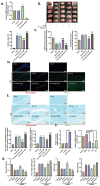

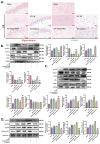
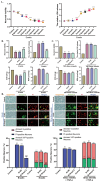
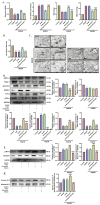


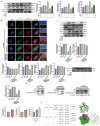
Similar articles
-
IGF2BP1 exacerbates neuroinflammation and cerebral ischemia/reperfusion injury by regulating neuronal ferroptosis and microglial polarization.Biochim Biophys Acta Mol Basis Dis. 2025 Aug;1871(6):167877. doi: 10.1016/j.bbadis.2025.167877. Epub 2025 Apr 26. Biochim Biophys Acta Mol Basis Dis. 2025. PMID: 40294852
-
Inhibition of Phosphodiesterase 4 Suppresses Neuronal Ferroptosis After Cerebral Ischemia/Reperfusion.Mol Neurobiol. 2025 Mar;62(3):3376-3395. doi: 10.1007/s12035-024-04495-9. Epub 2024 Sep 17. Mol Neurobiol. 2025. PMID: 39287745
-
Keap1-independent GSK-3β/Nrf2 signaling mediates electroacupuncture inhibition of oxidative stress to induce cerebral ischemia-reperfusion tolerance.Brain Res Bull. 2024 Oct 15;217:111071. doi: 10.1016/j.brainresbull.2024.111071. Epub 2024 Sep 5. Brain Res Bull. 2024. PMID: 39241893
-
N6022 attenuates cerebral ischemia/reperfusion injury-induced microglia ferroptosis by promoting Nrf2 nuclear translocation and inhibiting the GSNOR/GSTP1 axis.Eur J Pharmacol. 2024 Jun 5;972:176553. doi: 10.1016/j.ejphar.2024.176553. Epub 2024 Apr 2. Eur J Pharmacol. 2024. PMID: 38574838
-
Nuclear factor erythroid 2-related factor-mediated signaling alleviates ferroptosis during cerebral ischemia-reperfusion injury.Biomed Pharmacother. 2024 Nov;180:117513. doi: 10.1016/j.biopha.2024.117513. Epub 2024 Sep 27. Biomed Pharmacother. 2024. PMID: 39341075 Review.
Cited by
-
N-acetylneuraminic acid promotes ferroptosis of H9C2 cardiomyocytes with hypoxia/reoxygenation injury by inhibiting the Nrf2 axis.Nan Fang Yi Ke Da Xue Xue Bao. 2025 Jan 20;45(1):72-79. doi: 10.12122/j.issn.1673-4254.2025.01.10. Nan Fang Yi Ke Da Xue Xue Bao. 2025. PMID: 39819715 Free PMC article. Chinese, English.
References
Publication types
MeSH terms
Substances
Grants and funding
LinkOut - more resources
Full Text Sources

